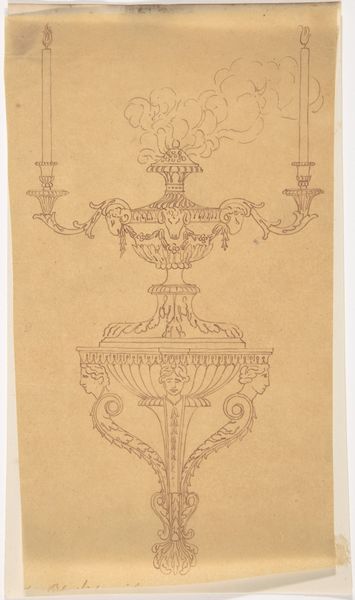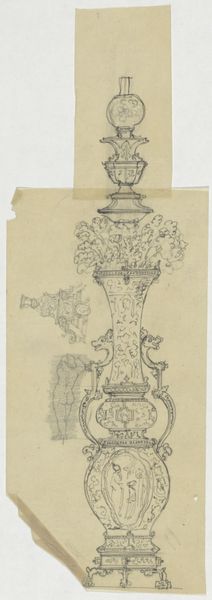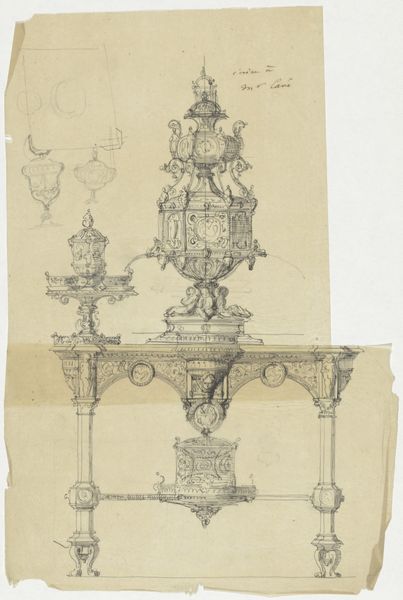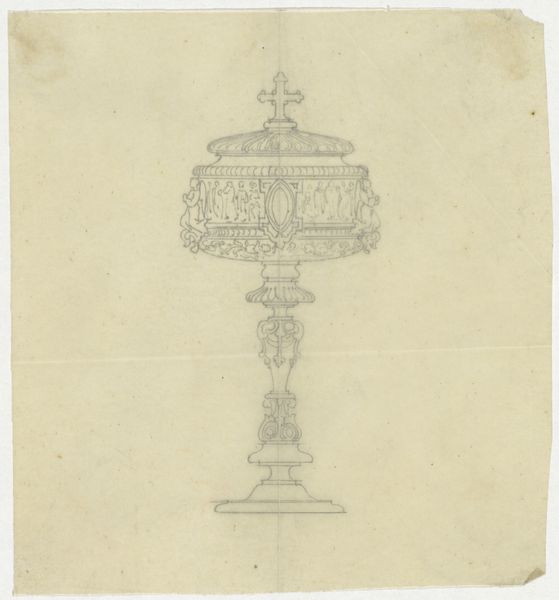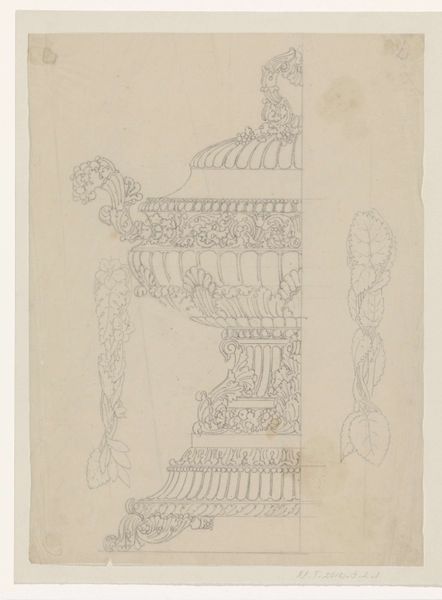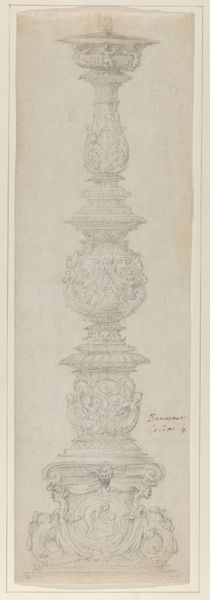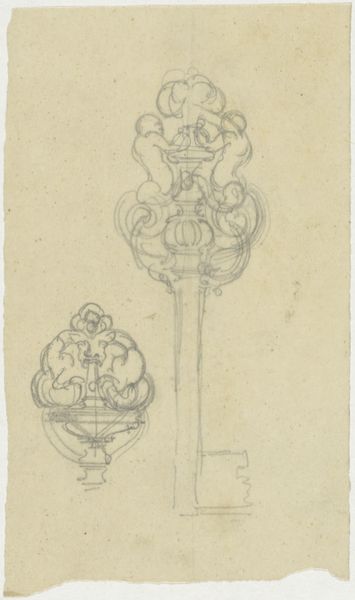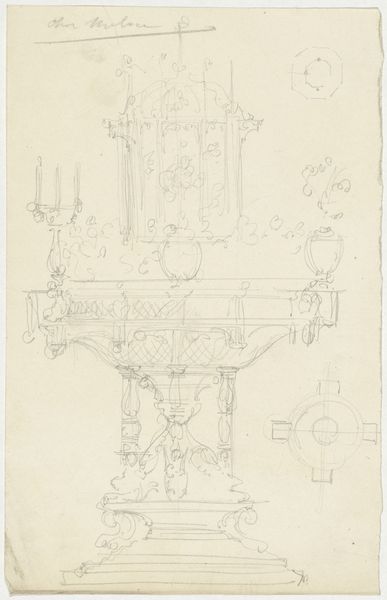
drawing, pencil
#
drawing
#
figuration
#
form
#
pencil
Dimensions: height 86 mm, width 140 mm
Copyright: Rijks Museum: Open Domain
Curator: This is a pencil drawing entitled "Vuurbok," attributed to Firma Feuchère, dating from around 1830 to 1850. The medium offers a unique perspective on form. What catches your eye first about this piece? Editor: It has a kind of rococo charm but feels fragile, doesn’t it? Like a memory sketched on parchment, those cherubic figures leaning so casually…almost melancholic amidst the flourishes. Curator: Interesting, 'melancholic.' From my point of view, the very details of production are what fascinate me. Consider that Firma Feuchère likely produced this not as a finished piece but as a design blueprint. We’re looking at a drawing for what would eventually be manufactured, perhaps cast in metal. Editor: So, a plan, not the thing itself. That changes my reading of it! I thought it was meant to evoke tenderness with that graphite smudging... but now it feels… more utilitarian. Although, even within a factory context, those hand-drawn lines still carry an echo of artistic sensibility, don’t they? Curator: Precisely! And notice the careful delineation, almost like an engineer’s blueprint. The pencil, a relatively inexpensive material, becomes the tool to potentially create an elaborate, costly object. We also see a breakdown of hierarchy: the drawing might be ‘lesser,’ but without it, there's no manufactured object at all. Editor: You’re right; the medium undermines any pretense. Thinking about the cherubs… their nonchalant poses almost mock the grandeur they're meant to embody. I also can’t help but wonder, did some apprentice work on the legs while the master sketched the figures? Curator: That's insightful. Division of labor is crucial here; each hand imparts its mark. Even though the design originates with Firma Feuchère, the process is collaborative. The 'Vuurbok,' seemingly opulent, stems from mundane work, various sets of hands shaping the form. Editor: So it is simultaneously ephemeral and enduring. Thanks, I think I'm looking at it differently now. I love when art does that. Curator: Absolutely. Considering the context changes our perception entirely; the means shape how we understand its form and value, or rather, its lack thereof!
Comments
No comments
Be the first to comment and join the conversation on the ultimate creative platform.
